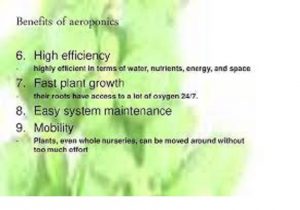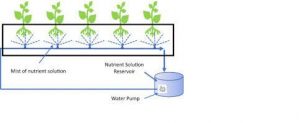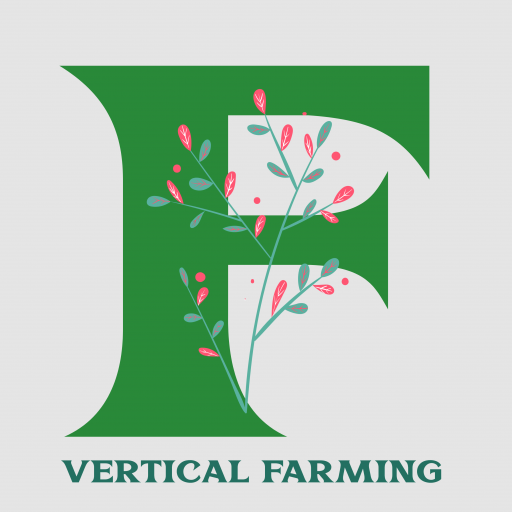The 16 top Benefits of Aeroponic Growing
Although the aeroponics technique was developed in the 1930’s, the technology hadn’t been widely recognized until recently. Aeroponic technology is now considered an advantage in the growing trend of large-scale urban food production. Many establishments are choosing to adopt aeroponic farming techniques as opposed to traditional aquaponic and aquaponic hybrid techniques. With constant advances in the fields of soilless gardening and plant science, it’s no wonder that farmers are trying to comprehend the advantages of using aeroponic gardening techniques.
#The 16 top Benefits of Aeroponic Growing.
The 16 top Benefits of Aeroponic Growing

- 1. Formalized paraphrase Three different methods are available using modern aeroponics.
- 2. It can support a large amount of plant development.
- 3. The possibility of higher yields is possible using aeroponics.
- 4. It’s easy to change old plants with new ones.
- 5. Aeroponics’ maintenance requirements are very low.
- 6. Aeroponics needs very little space to achieve the highest production levels.
- 7. Aeroponics allows for greater mobility.
- 8. It requires fewer resources to yield a crop when using aeroponics.
- 9. Aeroponics is an important research instrument.
- 10. It helps to build healthier root systems.
- 11. It offers educational value to growers and producers.
- 12. You can create clones of your most productive plants to boost production levels.
- 13. The requirements for power to grow are considerably less.
- 14. Room for breathing
- 15. Tailored Care
- 16. Free from insects
1. Formalized paraphrase Three different methods are available using modern aeroponics.
The modern aeroponics system employs high-pressure, low-pressure, or ultrasonic fogger methods for cultivating plants and fruit. This method is straightforward as it requires the user to set up a droplet system that keeps the base of the plant damp within the construction. The second option is more sophisticated, but it can also disperse the water more effectively to provide specific nutrients that certain plants require.
Fogponics: It is an intriguing technique that uses tiny drops of water to provide moisture and nutrients to the roots of plants. This allows the water to be more absorbable, but it could also result in scale and salt that can negatively impact the health of your growing plants.
2. It can support a large amount of plant development.

Aeroponics is a method of growing plants where the roots are exposed to oxygen throughout the day, all around all hours of the day. This type of structure helps produce healthier plants, which grow quicker than in other media. Producers can also employ the misting method to clean the structure to stop the spread of diseases in plants. This combination of factors gives a benefit in ensuring that nutrient absorption is at its highest since there is no obstruction from the medium that is growing.
3. The possibility of higher yields is possible using aeroponics.
If you compare plants grown in systems for aeroponics with those grown in traditional gardens or in soil, the system yields a crop that can be as high as three times more. Additionally, it produces plants and fruits with an enhanced flavor because there is no interfering medium. This creates a closed-loop system that allows producers to save as much as 60% off the cost of fertilizer and other supporting materials.
If any nutrients fail to be absorbed by the roots of the plants, they will trickle into the reservoir for aeroponics and be reapplied with the next drop of fog, mist, or rain. Most farmers can achieve greater yields and require less space than conventional crops. This makes it an ideal agriculture method for densely populated urban areas.
4. It’s easy to change old plants with new ones.
Aeroponics’ harvesting procedure is easy and simple. The producers will remove the old plants from the structure. They will then put new plants in the same location to stimulate growth in the future. Since the systems operate indoors, it’s possible to provide all-year-round farming opportunities in nearly every climate.
A variety of different plants are suited to the process of growing and are aided by aeroponics. Though technically, any plant can be grown using a system adequate to support plants, we are currently growing tomatoes, lettuce, strawberries, and even herbs such as basil or mint using this technique.
5. Aeroponics’ maintenance requirements are very low.

Since the producers do not utilize an aeroponics-based growing medium, the demands for maintaining this system are low and cost-effective. The main task that requires attention regularly is cleansing the chamber for roots. Also, you must regularly clean the channels for irrigation and the reservoir to ensure that plants enjoy the healthiest environment possible. If you can clean your bathroom using safe and healthy materials, you will be able to carry out this maintenance task on an aeroponics system.
6. Aeroponics needs very little space to achieve the highest production levels.
Modern aeroponics doesn’t need any space to yield a large amount. The structure’s design allows plants to be added to each other, which allows producers to make the most of their small area for growing. This means farms can be set up almost everywhere on earth, even in the most extreme climates.
Producers can grow plants as far south as Antarctica by using methods endorsed by aeroponics. Certain areas of cultivation may require special plans for growing because of space limitations or quarantine problems; These remote areas can be cultivated with everything from bell peppers all the way to various tomato varieties.
7. Aeroponics allows for greater mobility.
Aeroponics allows you to move plants around easily without impacting their potential growth. Producers can move an entire nursery if it is essential to set up a set that is set up in a different place. All you have to do is pull up the plant’s collar and then transfer it to the new place where you wish it to develop. This will make it easier to organize the space if multiple maturities are managed.
8. It requires fewer resources to yield a crop when using aeroponics.
Since there isn’t any growth medium that draws resources away from plants, many producers notice that it takes significantly less water and fewer nutrients to finish a growing cycle. Due to the construction’s design, the plants can experience a higher absorption of nutrients. This means that it requires less work to yield an acceptable yield.
While aeroponics isn’t able to currently compete with traditional methods of agriculture, the growth of investment possibilities could allow it to compete in the future agricultural market.
9. Aeroponics is an important research instrument.

Aeroponics was a field that quickly gained momentum as a useful research tool shortly following its creation. It offers researchers a noninvasive method to study the development of roots, which allows for creating a variety of research parameters that can be used for scientific work. The capability to control the water level in precise ways allows this plant to be used to study plants under extreme stress in water.
Climate change may have a catastrophic impact on our world. The reasons behind it might be debated, but we’re all agreed on what the results could be if a change is not possible. Aeroponics is a method that allows us to continue growing food in controlled conditions, even when the weather outside isn’t the best.
10. It helps to build healthier root systems.
Aeroponics results in healthier root systems in comparison to the methods that are used in hydroponics. There is less damage because there are fewer interfering points at each growth step.
11. It offers educational value to growers and producers.
You can learn many things from the process that aeroponics follows. If you have kids at home, an inexpensive system that costs $100 or less could aid in teaching children about how the growth of plants happens. It’s similar to having a pet, but it’s something that is not an animal. This means that there is less risk and effort in creating a positive experience. This could lead to more confidence among children about their ability to become aspiring gardeners. The value of this method of agriculture for education is undisputed.
12. You can create clones of your most productive plants to boost production levels.
If you’re a gardener who enjoys taking cut pieces of the plants you love, there are many options for cloning with aeroponics. Instead of root cubes and gels, the automated system provides an extremely fine spray with all the nutrients required to achieve a positive outcome. The results will happen quickly because the root base is more robust in its development method.
While the new plants have a higher sensitivity to environmental changes, you can create many replicas in less time using aeroponics.
13. The requirements for power to grow are considerably less.
Cannabis is shifting to aeroponics to lower its cost. Traditional growing methods require around 2000 kW of power to produce one pound of cannabis. That’s what the average family in the United States uses every 60 days. Making the switch to this technology could help save significant amounts of electricity since you’ll be able to be more in control of the whole process of growth.
When cannabis plants are suspended from the atmosphere, the fertilizer usage drops by around 40%, and the amount of water consumed decreases by as much as 98%.
14. Room for breathing
In an aeroponic system, plant roots are suspended in the air, not in the soil or in water. The roots of plants are exposed to the nutrient-rich mist, which gives the plants all the nutrients and water they require to grow. In an aeroponic greenhouse, the roots of plants have more access to the atmospheric concentrations of gases like oxygen, which improves the health of plants. Similar to how overwatering your home plant could drown it in water, the roots of plants could get a bit soggy and deficient in oxygen when submerged. An aeroponic system will ensure that this doesn’t occur.
Healthy plants that have good rootstock develop quicker. This leads to more cropping cycles each year, and a higher yield for your farm.
15. Tailored Care
Letts Grow’s systems for aeroponics offer the capability to apply nutrient solutions with high precision. The amount of mist that is produced can be controlled in each grow bed so that you can supply specific crops with the right feed that best suits their needs. This will allow you to adjust how you prepare your crops continuously, and more rapid growth will result in a faster turnover of your crops.
16. Free from insects
The positioning of roots implies the plants will be less vulnerable to mold or other diseases due to the seeds and the growing media being dry in aeroponic systems. UV sterilization and filtration are utilized to recapture and reuse water from the system. This assures that outbreaks of diseases or pests are reduced to a minimum.

